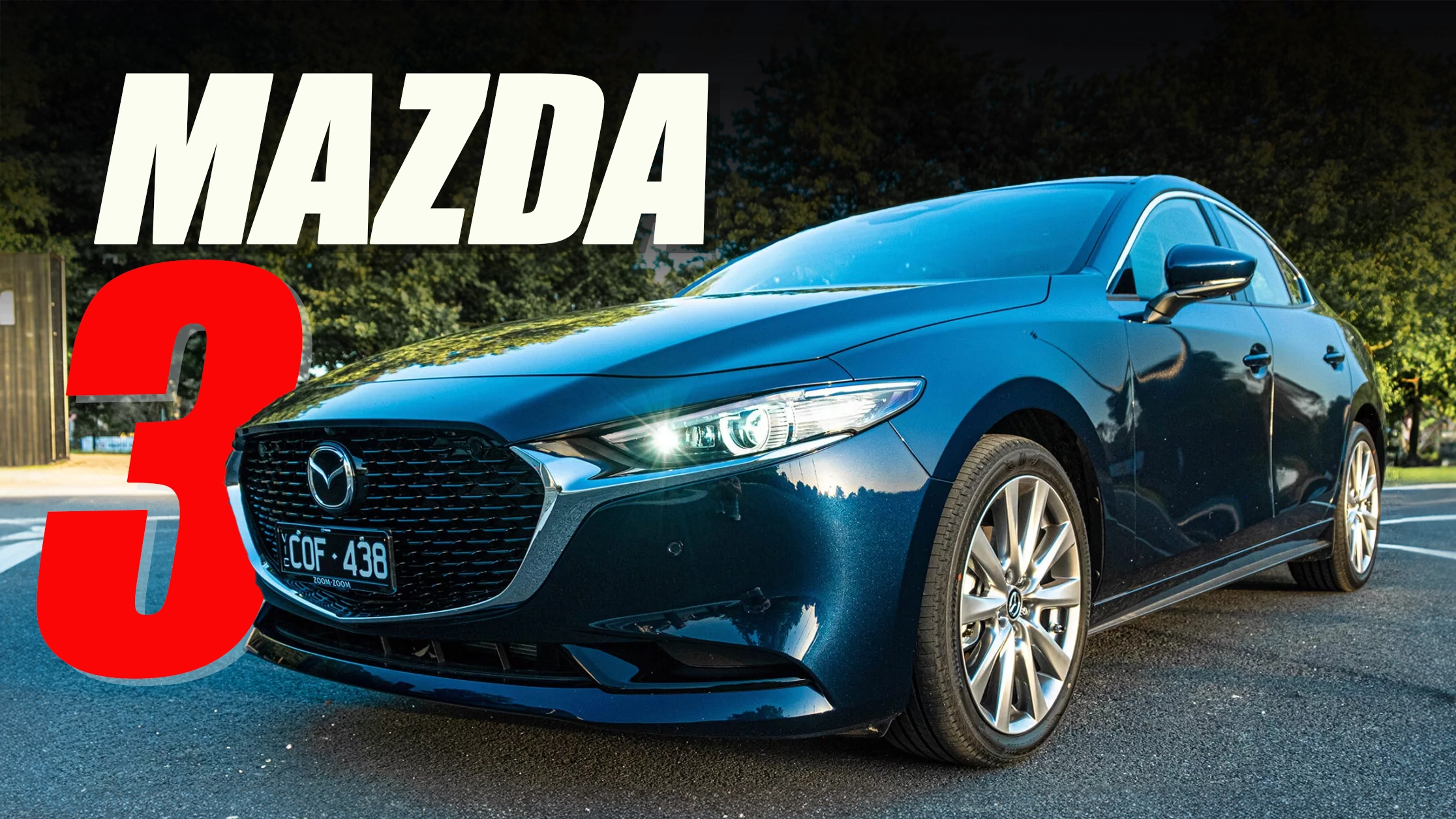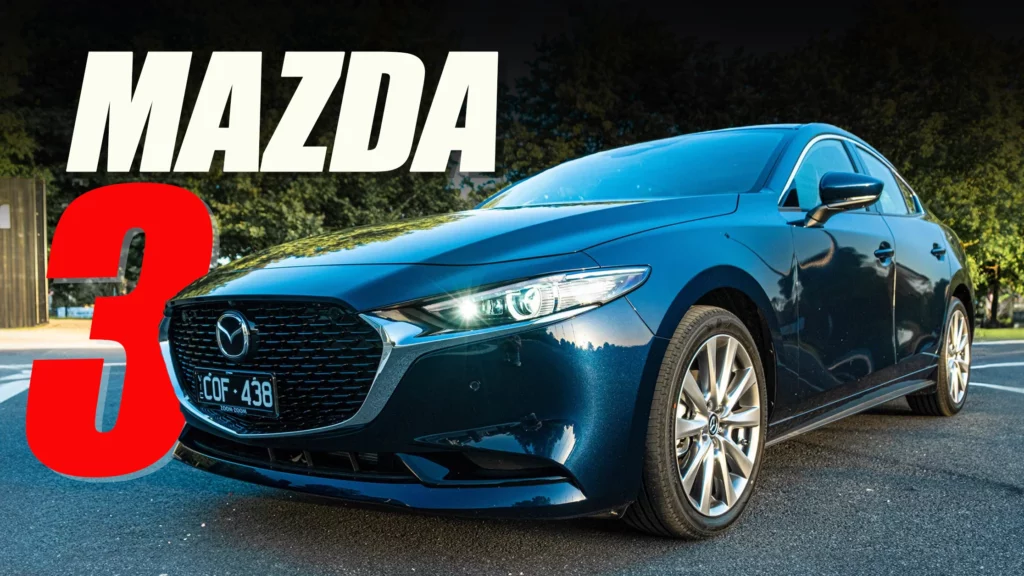
The current-generation Mazda3 is a few years old now but it remains one of the best offerings in its segment
1 hour ago
In early 2018, I had the opportunity to get a preview of what would become the fourth-generation Mazda3. I was attending the Geneva Motor Show when I first saw the Mazda Kai Concept and was flabbergasted by how good it looked.
A couple of days later, McLaren invited me to a media dinner, and I got talking to some industry colleagues and McLaren executives. Asked what my highlight from the Geneva show was, I didn’t say one of the million-dollar hypercars on display, nor any of the cars from McLaren’s booth. Instead, I answered the Kai Concept. I was enamored, and almost exactly two years later, in the first wave of the coronavirus, I convinced my mother to sell her VW Golf and buy a new Mazda3 hatchback, the production version of that concept.
QUICK FACTS
I’ve spent countless hours behind the wheel of her car and had long wondered how the Mazda3 sedan would feel in comparison. To find out, I spent a week driving the sedan G25 Astina and was just as impressed with it as I am with the hatch.
Hatch or sedan, take your pick
Mazda Australia sells a dizzying array of Mazda3 in hatchback and sedan guises, and regardless of which body style you choose, the price is the same. That means the entry-level G20 Pure is AU$32,990 (~$21,700) in both hatch and sedan forms while the flagship G25 Astina is both AU$47,147 (~$31,100) in the hatch and sedan. Sitting between the G20 Pure and G25 Astina are four other versions, the G20 Evolve, G20 Touring, G25 Evolve SP, and G25 GT, priced between AU$36,261 (~$23,900) and AU$43,084 (~$28,400).
Two engine options are available. The entry-level option is a 2.0-liter naturally-aspirated four-cylinder with 114 kW (153 hp) at 6,000 rpm and 200 Nm (148 lb-ft) of torque at 4,000 rpm. This engine is found in the G20 Pure, G20 Evolve, and G20 Touring models. Customers looking for extra punch can opt for the 2.5-liter naturally-aspirated four-cylinder with 139 kW (186 hp) at 6,000 rpm and 252 Nm (186 lb-ft) of torque at 4,000 rpm.
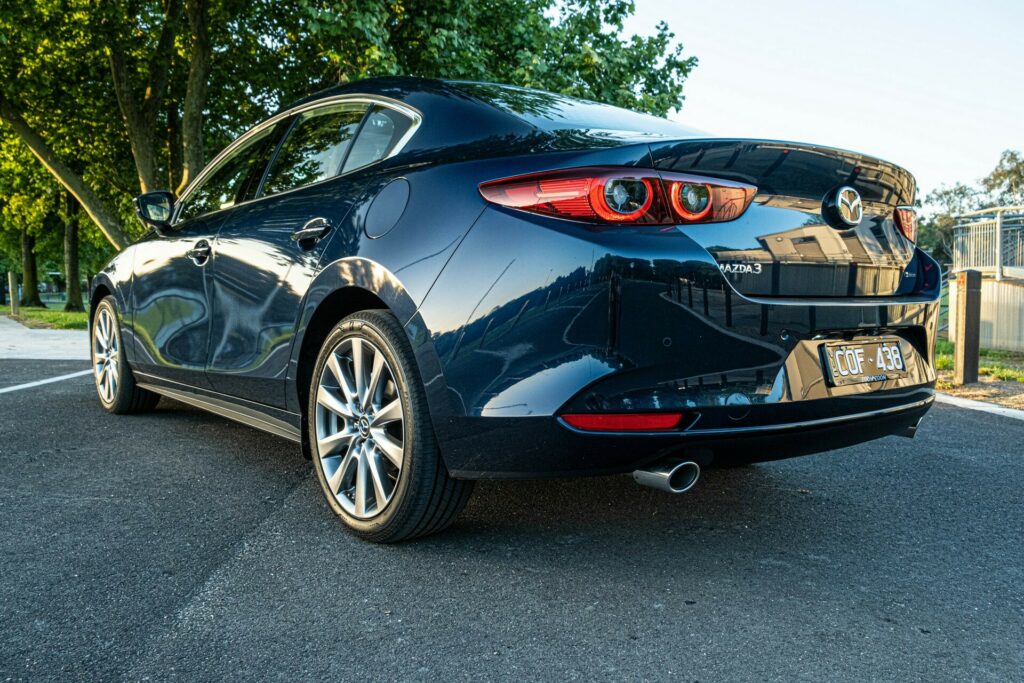
All versions of the Mazda3 hatch and sedan can be optioned with the AU$2,000 (~$1,300) Vision Technology pack, which comes standard on the Astina we tested. This adds driver monitoring, a 360-degree view monitor, front cross-traffic alert, cruising & traffic support, front parking sensors, and a 10.25-inch infotainment display.
Design and interior
The design of the sedan is almost identical to the hatchback, with the exception of the different rear end. While, in my opinion, the hatch is by far the best-looking in its segment, I’ve always thought the sedan looked a little less appealing, finding the rear to look a little too high and bulbous. Overall, it’s a sleek-looking thing, particularly when viewed from the front with that large grille and angular headlights, complete with angel-eye LED DRLs.
Photos Brad Anderson/Carscoops
For me, the interior of the fourth-gen Mazda3 has always been a highlight.
Unlike the Hyundai i30 hatch and Kia Cerato, which the 3 competes with, Mazda’s cabin doesn’t feel cheap and scratchy. It feels premium. Adorning the dashboard on even the most basic of versions is soft leather that makes it feel like you’re driving a much more expensive car than you are. The soft-touch leather continues across the door panels, steering wheel, center console, shifter, and the sides of the transmission tunnel.
Both the G25 GT and G25 Astina models come loaded with goodies not found on the entry-level G25 Evolve GT. These include a heated steering wheel, heated front seats clad in leather, and an enlarged 10.25-inch infotainment display. Features exclusive to the Astina include a 12-speaker Bose audio system and a tilt glass sunroof.
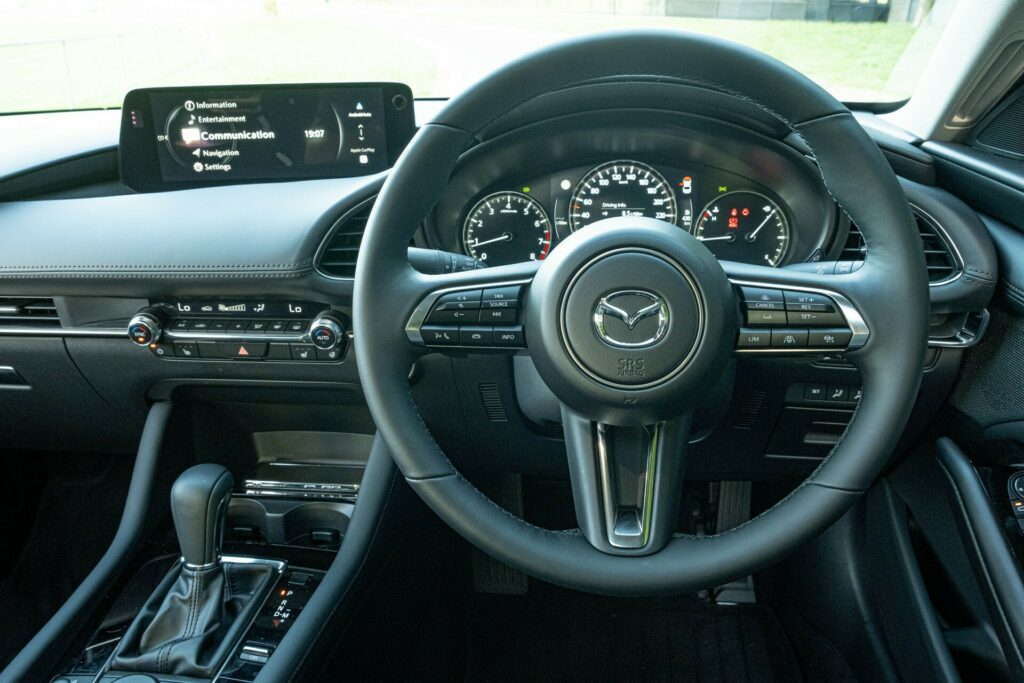
Sliding into the Mazda3’s cabin for the first time proves the Japanese marque retains a keen eye for detail and has placed the focus on the driver. The front seats sit low in the cabin, allowing even tall drivers to find the perfect seating position. The steering wheel also offers plenty of adjustment, and the seat bolsters provide lots of support.
The hatch’s cabin can feel slightly claustrophobic because of the massive C-pillars and the dark headliner. This isn’t the case in the sedan, as the rear windows are much larger, letting plenty of light in. The sedan also comes with a light-colored headliner, which is a nice touch. Other welcome features include a wireless smartphone charger, wireless Apple CarPlay, and wireless Android Auto.
Read: 2024 Mazda 3 Updated With Bigger No-Touchscreen, Wireless Phone Charger
Like the hatch, the sedan’s infotainment display is operated primarily with a rotary dial on the console. However, new for 2024 is the ability to use the display as a touchscreen, although it only functions as such when the car is parked. It’s a shame Mazda has persisted with cladding the console in piano black plastic that is vulnerable to scratches.
The second row is a little cramped, but there is more headroom than the hatch. Like the front seats, the back seats of the Astina are clad in soft-touch black leather.
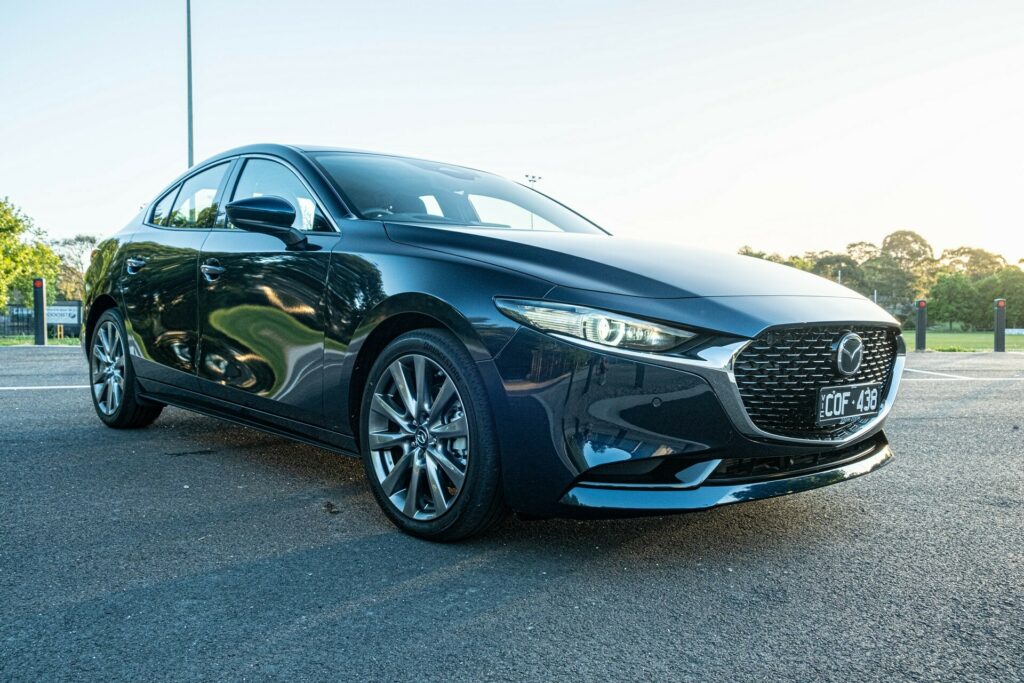
The drive
The Mazda3 G25 Astina punches above its weight in terms of the driving experience, too.
Mazda’s entry-level 2.0-liter naturally-aspirated four-cylinder is a good option for some, but it feels somewhat gutless in the Mazda3. The same can’t be said about the 2.5-liter. On paper, the larger engine has 25 kW (34 hp) and 52 Nm (38 lb-ft) extra, but the power discrepancy feels even more considerable than that. By no means is the G25 a hot hatch, but in terms of straight-line performance, it’s knocking on the door of models like the Kia Cerato GT and Hyundai i30 N Line, both with 150 kW (201 hp) and 265 Nm (195 lb-ft).
Power feels solid through the entire rev range, and the eight-speed auto is a perfect match for this engine. There are a pair of small plastic paddle shifters behind the steering wheel to let you shift cogs manually, but for the most part, I let the transmission decide what gear was best. As this isn’t a performance-focused eight-speed, the shifts are swift, not rapid.
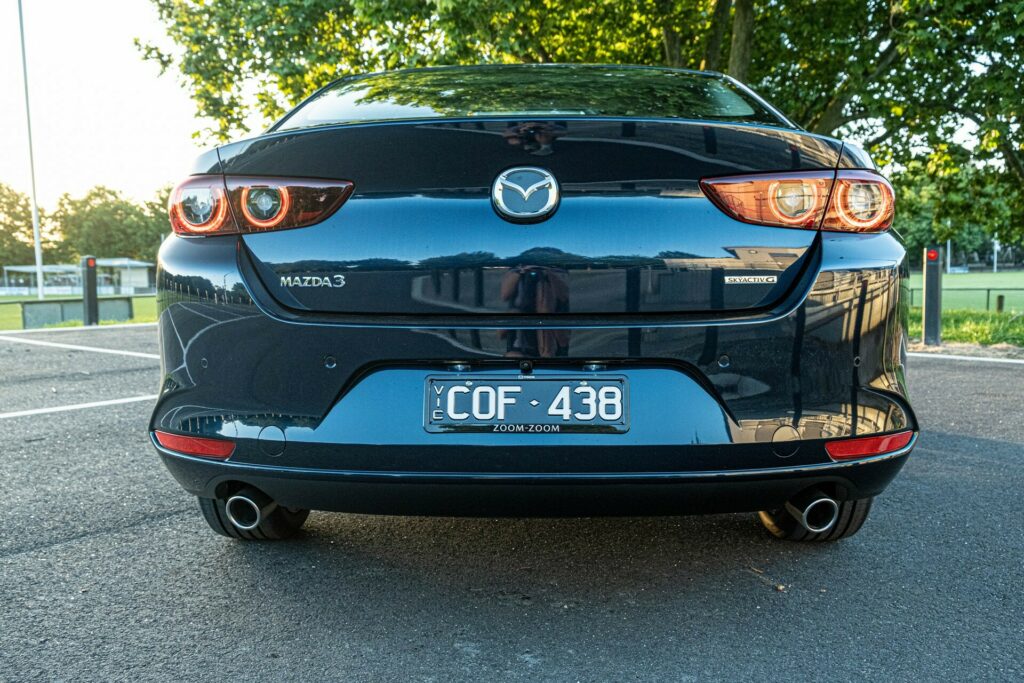
The engine and exhaust sound very nice, too, particularly on cold starts when they emit a nice little burble.
Unfortunately, Mazda Australia doesn’t sell the 2.5-liter turbocharged Mazda3 as offered in the U.S. This model packs 250 hp (184 kW) and 320 lb-ft (434 Nm) of torque. That’s more twisting force than even the FL5 Honda Civic Type R, and we suspect it makes the car even more enjoyable to drive.
Nevertheless, show the Mazda3 G25 some twisties, and it performs well there, too. Our test car’s Bridgestone Turanza T005 tires offer a good amount of grip and plenty of feedback, meaning it’s easy to tell when you’re near the limits of adhesion. The steering is heavier than some rivals, but driving enthusiasts will love it.
The most impressive part of the car is the ride. Mazda has done a superb job of engineering a soft and compliant suspension capable of quickly soaking up speed bumps and potholes.
Verdict
If I were in the market for a new hatchback, the Mazda3 would be my pick. The Mazda3 sedan doesn’t have quite the same visual appeal as the hatch but is the more practical and spacious option. It proves that while sedans are slowly dying, there are still some solid options out there. As for the Mazda3, things are simple: if you want sexy, get the hatch. If you want practicality, go for the sedan.
